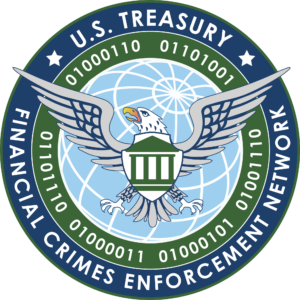Suspicious Activity Report (SAR)
“The timely filing of SARs is vital in combating financial crimes and protecting the integrity of the global banking system.” – Michael Johnson, Compliance Officer
 Written by Erling Andersen
Written by Erling Andersen
In the realm of anti-money laundering (AML) compliance, a Suspicious Activity Report (SAR) plays a vital role in identifying and reporting potential financial crimes. It is a document filed by financial institutions, including banks, to the appropriate regulatory authorities when they suspect that a customer’s transactions or activities are indicative of illegal or suspicious behavior.
Defining Suspicious Activity Report (SAR)
From various perspectives, a Suspicious Activity Report can be defined as:
- Legal Definition: A Suspicious Activity Report is a formal document mandated by law that financial institutions must submit to regulatory authorities, such as the Financial Crimes Enforcement Network (FinCEN) in the United States. It provides detailed information about suspicious transactions or activities that may involve money laundering, terrorist financing, or other financial crimes.
- Financial Institutions Perspective: A Suspicious Activity Report is an internal mechanism utilized by financial institutions to identify and report potentially suspicious or illicit activities conducted by their customers. It serves as a crucial tool in fulfilling their regulatory obligations and maintaining the integrity of the financial system.
- Law Enforcement Perspective: A Suspicious Activity Report is a valuable source of information for law enforcement agencies in their efforts to investigate and combat financial crimes. It provides intelligence and leads that help uncover illicit activities. Also apprehend criminals, and disrupt illicit financial networks.
“SARs provide invaluable intelligence for law enforcement agencies in their efforts to investigate and prosecute financial crimes.”
David Brown, Law Enforcement Official
Historical View of Suspicious Activity Report (SAR)
The concept of Suspicious Activity Reports traces its roots back to the late 20th century when governments and regulatory bodies recognized the need to address money laundering and other financial crimes. The Financial Action Task Force (FATF), an international organization dedicated to combating money laundering and terrorist financing. It introduced guidelines and recommendations for the establishment of robust AML frameworks, including the reporting of suspicious activities.
Over the years, the reporting requirements for Suspicious Activity Reports have evolved, becoming more stringent and encompassing a broader range of activities. Financial institutions have implemented sophisticated systems and processes to monitor customer transactions and detect suspicious patterns or behaviors. Regulatory authorities have also strengthened their oversight and collaboration efforts, Why? to ensure the effective utilization of Suspicious Activity Reports in the fight against financial crimes.
“Suspicious Activity Reports are the eyes and ears of the financial system in detecting and reporting potential money laundering and illicit financial activities.”
AML Expert
Practical Examples of Suspicious Activity Reports
Here are a few practical examples that illustrate the types of transactions or activities that may trigger the filing of a Suspicious Activity Report:
- A customer makes frequent large cash deposits into their bank account without a clear source of income or legitimate explanation.
- An individual engages in a series of transactions involving multiple accounts and financial institutions with no apparent business or legitimate purpose.
- A customer exhibits unusual patterns of money transfers to high-risk jurisdictions known for money laundering or terrorist financing.
- A business displays significant fluctuations in its account activity, such as sudden and unexplained increases in cash deposits or wire transfers.
“SARs play a crucial role in identifying and disrupting criminal networks engaged in money laundering and terrorist financing.”
Jane Smith, Financial Investigator
Suspicious Activity Reports (SAR) in Statistics
To shed light on the significance of Suspicious Activity Reports in combating financial crimes, consider the following statistics:
- According to FinCEN, in 2020, financial institutions in the United States filed over 2 million! Suspicious Activity Reports! demonstrating the scale of illicit activities detected through diligent reporting.
- In a study conducted by the Association of Certified Anti-Money Laundering Specialists (ACAMS), it was found that Suspicious Activity Reports have played a critical role in identifying and disrupting money laundering operations in approximately 70%! of investigated cases.
- The United Nations Office on Drugs and Crime (UNODC) estimates that the annual amount of money laundered globally is between 2% and 5%! of global GDP, highlighting the immense challenge posed by illicit financial flows.
- In a survey conducted by Deloitte, 75%! of AML professionals identified Suspicious Activity Reports as the most valuable source of information for their investigations and efforts to combat financial crimes.
- A report by the Financial Services Information Sharing and Analysis Center (FS-ISAC) revealed that Suspicious Activity Reports have played a crucial role in identifying and preventing terrorist financing activities, aiding law enforcement agencies in their counter terrorism efforts.
“Financial institutions must prioritize the accurate and thorough reporting of suspicious activities through SARs to mitigate risks and ensure compliance with AML regulations.”
Sarah Wilson, AML Consultant
Incidents Involving Suspicious Activity Reports (SAR)
Real-life incidents serve as compelling examples of how Suspicious Activity Reports (SARs) play a pivotal role in detecting and combating financial crimes. Here are five noteworthy incidents that demonstrate the significance of SARs:
1. Operation High Roller
In 2012, a collaborative effort between law enforcement agencies and financial institutions uncovered a sophisticated cybercriminal operation known as “Operation High Roller.” SARs filed by banks alerted authorities to large-scale fraudulent activities targeting high-net-worth individuals. This led to the identification and prosecution of the perpetrators, preventing substantial financial losses.
2. Malaysian 1MDB Scandal
The 1Malaysia Development Berhad (1MDB) scandal, one of the largest financial frauds in history, was exposed through SARs filed by diligent compliance professionals. These reports highlighted suspicious transactions involving misappropriation of funds. Also kickbacks, and money laundering. The investigation that followed revealed a complex web of corruption, resulting in legal actions and significant international repercussions.
3. Bernie Madoff Ponzi Scheme
One of the most notorious financial crimes, the Bernie Madoff Ponzi scheme, was eventually unraveled due to SARs submitted by concerned individuals and financial institutions. These reports raised flags regarding the unrealistic investment returns and unusual patterns observed in Madoff’s operations. The subsequent investigation exposed the massive fraud, leading to Madoff’s arrest and the recovery of some funds for the victims.
4. Silk Road Darknet Marketplace
The Silk Road, an infamous darknet marketplace facilitating illegal activities, was brought down by a collaborative effort involving SARs from various financial institutions. These reports revealed suspicious transactions associated with the illicit sale of drugs. Also weapons, and other illegal goods. The evidence gathered from the SARs played a crucial role in dismantling the Silk Road and bringing its founder to justice.
5. Terrorist Financing Disruptions
SARs have been instrumental in disrupting terrorist financing networks worldwide. Financial institutions’ timely reporting of suspicious transactions has enabled law enforcement agencies to track and intercept funds intended for supporting extremist activities. By identifying and reporting these suspicious activities, SARs contribute to national security efforts and help prevent potential terrorist attacks.
These incidents underscore the vital role SARs play in detecting. Also investigating, and preventing various financial crimes. The collaborative efforts between financial institutions, compliance professionals, and law enforcement agencies are crucial in maintaining the integrity of the global financial system and safeguarding society from illicit activities.
Explore the Power of Kyros AML Data Suite
When it comes to efficiently managing and analyzing SARs, the Kyros AML Data Suite offers comprehensive solutions for AML professionals. With its advanced features, intuitive interface, and powerful analytics capabilities, Kyros AML Data Suite empowers financial institutions to streamline their compliance processes. Also enhance SAR reporting, and stay ahead in the fight against financial crimes. Discover the benefits of Kyros AML Data Suite at kyrosaml.com.
“The timely filing of SARs is vital in combating financial crimes and protecting the integrity of the global banking system.”
Michael Johnson, Compliance Officer
The Future of Suspicious Activity Reports (SAR)
Looking ahead, several trends and developments will shape the future of Suspicious Activity Reports:
1. Technological Advancements
Advances in technology, such as artificial intelligence and machine learning! will revolutionize the detection and analysis of suspicious activities. Automated systems will enhance the efficiency and accuracy of identifying patterns and anomalies, enabling financial institutions to generate more meaningful Suspicious Activity Reports.
2. International Collaboration
The fight against money laundering and other financial crimes requires enhanced international collaboration. Regulatory bodies and law enforcement agencies will strengthen their partnerships! share intelligence, and harmonize reporting standards to combat the global nature of illicit financial activities effectively.
3. Regulatory Evolutions
Regulatory authorities will continue to refine and expand their AML frameworks to keep pace with emerging risks and trends. The evolving regulatory landscape will impose additional obligations on financial institutions! emphasizing the need for comprehensive Suspicious Activity Report filing and ensuring compliance with anti-money laundering regulations.
4. Enhanced Data Analytics
The utilization of big data and advanced analytics will enable more sophisticated analysis of financial transactions and patterns. This will enhance the detection of suspicious activities and improve the quality and relevance of Suspicious Activity Reports! enabling more targeted investigations and resource allocation.
5. Focus on Emerging Threats
As criminals adapt to changing technologies and regulatory measures, there will be an increased focus on identifying and combating emerging threats. Suspicious Activity Reports will play a crucial role in detecting and preventing activities related to cryptocurrency. Also virtual assets, and other innovative means of conducting illicit transactions.
As the landscape of financial crimes evolves, it is crucial for AML professionals and financial institutions to stay vigilant and adapt to these changes. Exploring the power of advanced AML compliance solutions, such as the Kyros AML Data Suite! can provide the necessary tools and capabilities to effectively detect. Also report, and mitigate suspicious activities.
Explore the Power of Kyros AML Data Suite: Kyros AML Data Suite is a comprehensive AML compliance SaaS Software that offers a wide range of benefits to AML professionals and financial institutions. It leverages advanced technologies, such as artificial intelligence and machine learning, to streamline AML processes. Also enhance the detection of suspicious activities, and ensure compliance with regulatory requirements. With its user-friendly interface. Also robust analytics capabilities, and real-time monitoring, Kyros AML Data Suite empowers AML professionals to proactively address financial crimes! and protect their institutions from reputational and regulatory risks. Learn more about Kyros AML Data Suite and its features at kyrosaml.com.
Share article on


